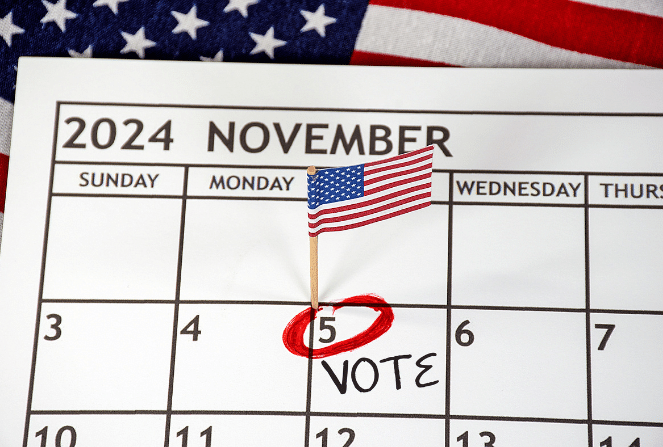Being in the hospitality business means it’s your job to make sure everyone feels welcome and included. Whether you want diners to celebrate a milestone in their lives, take a quick break from their busy days, or simply feel at home, how you show your hospitality matters.
The same thing is true with your employees. Restaurant and hospitality is considered one of the most diverse workforces — but that doesn’t mean there’s no work to be done. According to the National Restaurant Association, 4 in 10 restaurant managers identify as a minority, and 6 in 10 chefs do. In the wake of the toughest year for restaurants, it’s more important than ever to have a workplace diversity policy that makes every team member feel safe and supported.
What is a restaurant diversity policy?
Diversity policies — sometimes called diversity, equity, and inclusion policies — outline behaviors that are ok and not ok when it comes to working together as a team. A workplace diversity policy for restaurants makes a clear statement about your commitment to making your restaurant a safe and positive place to work for everyone, regardless of age, race, gender, appearance, disability, size, religion, sexuality, or citizenship.
Diversity policies cover everything from training, recruitment, compensation, and responding to harassment from other staff or from diners. It’s your way of showing your team how to create a positive working environment that focuses on what matters: creating the best possible experience for your diners.
Why should restaurants have a diversity policy?
You know that feeling when your kitchen is humming along, orders come in and out smoothly, and not one diner complains about their meal? That kind of magic doesn’t happen without putting the right systems and processes in place so that your front-of-house and back-of-house staff can work seamlessly together.
It doesn’t always happen — we’ve all been there when a dishwasher breaks mid-service, or you run out of a popular dish, or you get so many takeout orders it’s impossible to keep up — but with a strong team behind you, you can handle anything.
“The interests of our own employees must be placed directly ahead of those of our guests because the only way we can consistently earn raves, win repeat business, and develop bonds of loyalty with our guests is first to ensure that our own team members feel jazzed about coming to work. Being jazzed is a combination of feeling motivated, enthusiastic, confident, proud, and at peace with the choice to work on our team.”
― Danny Meyer, Union Square Hospitality Group
That’s why a restaurant diversity policy is so important. Hospitality starts from your team and how you treat your employees.
How do you create a diversity policy for restaurants?
One thing is for sure: you can’t put together a document and call your work done.
A diversity policy needs to acknowledge where you’re at with your restaurant culture and show a way forward to get to a better place. If you put together a document, call it a policy, and make no changes about how you interact in the kitchen or deal with racist or sexist incidents from customers, then you’re just checking a box, not making a policy.
It starts with you and the culture you create.
That means talking to your team. At family dinner or a team meeting, listen to them and any concerns or priorities with an open mind. Talk about any experiences they may have had, at your restaurant or in their lifetime. Understand what’s going to make them feel heard, supported, and accepted at your restaurant.
The first step to working better together will be transparency. That’s where a document and guidebook comes in so that everyone knows where to find this information, who to talk to if they have a problem, and any resources.
When it comes to putting together the document, you should create two versions: A public statement on your website and a private, more in-depth handbook for your team. It should include:
- An introductory value statement underlining your commitment to diversity, equity, and inclusion — and your goals for the future
- Guidelines for recruitment and hiring from a variety of backgrounds, including ensuring hiring decisions that eliminate bias or ask uncomfortable (or sometimes illegal!) questions like previous wages, marital or parental status, or sexuality
- Benefits specifically designed to make your restaurant a better, more inclusive place to work, like childcare arrangements, flexible schedules, support groups and networking, career development, and mentorship programs
- Transparent pay brackets that detail compensation for each type of role based on experience, certificates, and training
- Training schedules and guidance for managers on how to promote diversity, inclusion, and career growth, as well as what to do with incidents or harassment
- Scenario playbooks for FOH staff to handle language barriers, deal with diner harassment, and understand cultural differences with empathy
- Contact information for management or HR to direct claims and questions to
3 restaurant diversity policy examples
Every restaurant is different. Whether you’re part of a fast-casual franchise, own a single location, or run a network of restaurants, take a look at these examples and see what resonates with you and the culture of inclusion you hope to create.
1. McDonalds’ restaurant diversity policy covers their entire organization, including executive leadership, employees, hiring, and suppliers. First, they offer data on the organization and then outline clear goals about how they plan to close their gaps. Most importantly, they offer consistent and actionable language about every step of the process:
“Our goal is to ensure at every interaction, all are welcome, comfortable and safe…In accordance with our values, this means global actions on a local level designed to represent the diverse communities in which we operate, accelerate cultures of inclusion and belonging, and dismantle barriers to economic opportunity. We aim to offer an experience where everyone is aware of their unique ability and is able to develop the meaningful relationships with colleagues that inspire and drive business growth.”
2. Boston-based J+K Food Group doesn’t include as much information, but adds a note to their overall health and safety policies making their commitments clear and linking to a donation page for the NAACP.
“JK Food Group is committed to the community we belong to, we are looking to hire new team members who better reflect that. If you are looking to enter the hospitality world for the first time, or are a career restaurant worker, we are interested in speaking with you. Please stop by and see a manager.”
3. Chef Jose Andres’ ThinkFoodGroup offers this note at the top of their careers page, after a list of values that include authenticity, innovation, passion, service, and profitability:
“The company values the contribution of each of its employees and recognizes that as a global leader and employer in the restaurant industry, its core is made up of people of all backgrounds who come together to serve delicious food – and tell engaging stories – to its guests.”
Regardless of length or depth, it’s important to make sure your employees are all on the same page. Creating a restaurant diversity policy requires you to reflect on your culture, your management style, and how you want to take your restaurant to the next stage — but the more your team feels supported, the more diners will love coming to your restaurant.




